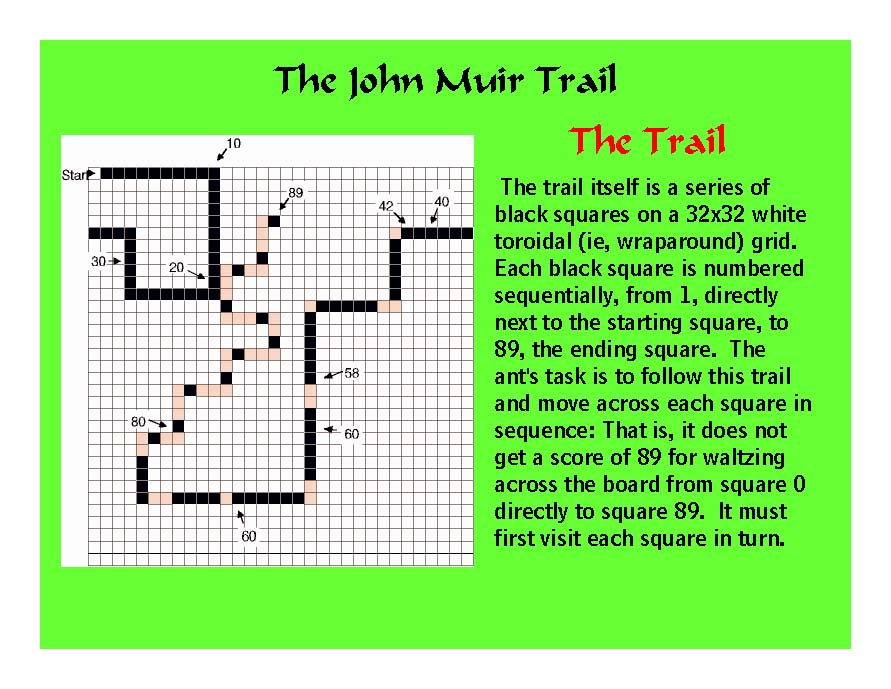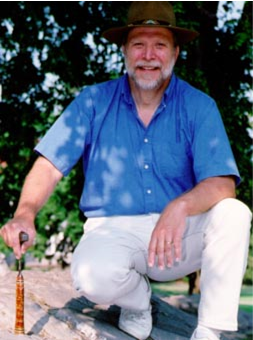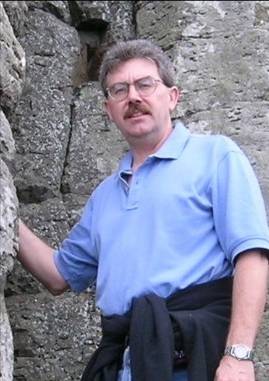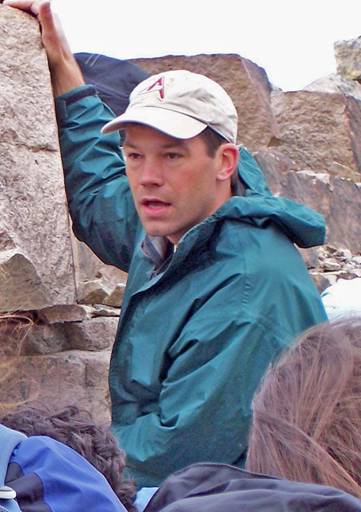James Madison University - Department of Geology & Environmental Science
Teaching Chaos and Complex Evolutionary Systems Theories at the Introductory Level
Models: John Muir Trail and Tierra:
Elaborating Evolution: Genetic AlgorithmsStrategies and Rubrics for Teaching Chaos and Complex Systems Theories as Elaborating, Self-Organizing, and Fractionating Evolutionary Systems,
Fichter, Lynn S., Pyle, E.J., and Whitmeyer, S.J., 2010, Journal of Geoscience Education (in press)Description: A genetic algorithm is an evolutionary model premised on evolutionary ideas of genetics (genomes, mutations, crossovers, etc.) and natural selection. They are commonly used today as a search technique that seeks to find approximate solutions to problems by evolving a solution. From a complex systems perspective these are electronic ecosystems in which are placed electonic bugs that adapt and evolve to the model's conditions.
The John Muir Trail was developed by an MIT research group to discover how efficiently a “species” of ants can learn to run a trail. It is described in Artificial Life by Levy (1993) and Emergence: The Connected Lives of Ants, Brains, Cities and Software by Johnson (2002). We do not have a program to run this, but we describe its workings and outcomes in class (this power point has a more complete description and analysis).
An online more technical description is by Jefferson, Collins, and Cooper. Also look at Resources on the Elaborating Evolution page.
Tierra. One of the most advanced genetic algorithms is Tom Ray’s Tierra. Tierra begins with one simple string of machine code that can do only one thing—create a copy of itself. Then, with a low level of background mutation, and millions of generations new species are generated, ecosystems created, parasites evolve, which are then overtaken by other hyper-parasites, which are then overtaken by hyper-hyper parasites. What we get is what we observe in nature, except that with a genetic algorithm we get a complete data set of all the evolutionary changes taking place, available for analysis. One of the things such systems demonstrate is that many of these genetic algorithms undergo punctuational evolutionary change, and have waves of extinctions that follow a power law (similar to the extinction data of Raup and Sepkoski, 1986). All these point to elaborating evolution as a complex system.
The literature on this topic is vast. If you are interested in more start with Computer Models in Evolution, or Welcome to the Tierra Home Page. Also search under Avida.
Presentation: These are presented in lecture format, accompanied by Power Point slides.
Anticipated Learning Outcome:
- 15. (Same as Last) The general evolutionary algorithm—1) differentiate, 2) select, 3) amplify, 4) repeat—is an extremely efficient and effective method of natural selection.
Tierra
- a description of the strategy and outcomes of the system,extracted from a now unavailable web site by Tom Ray.Power Point lecture
- Wordevolv, John Muir Trail, and Tierra
 Lynn S. Fichter
Lynn S. Fichter
 Steve Baedke
Steve Baedke
 Eric Pyle
Eric Pyle
 Steve Whitmeyer
Steve Whitmeyer